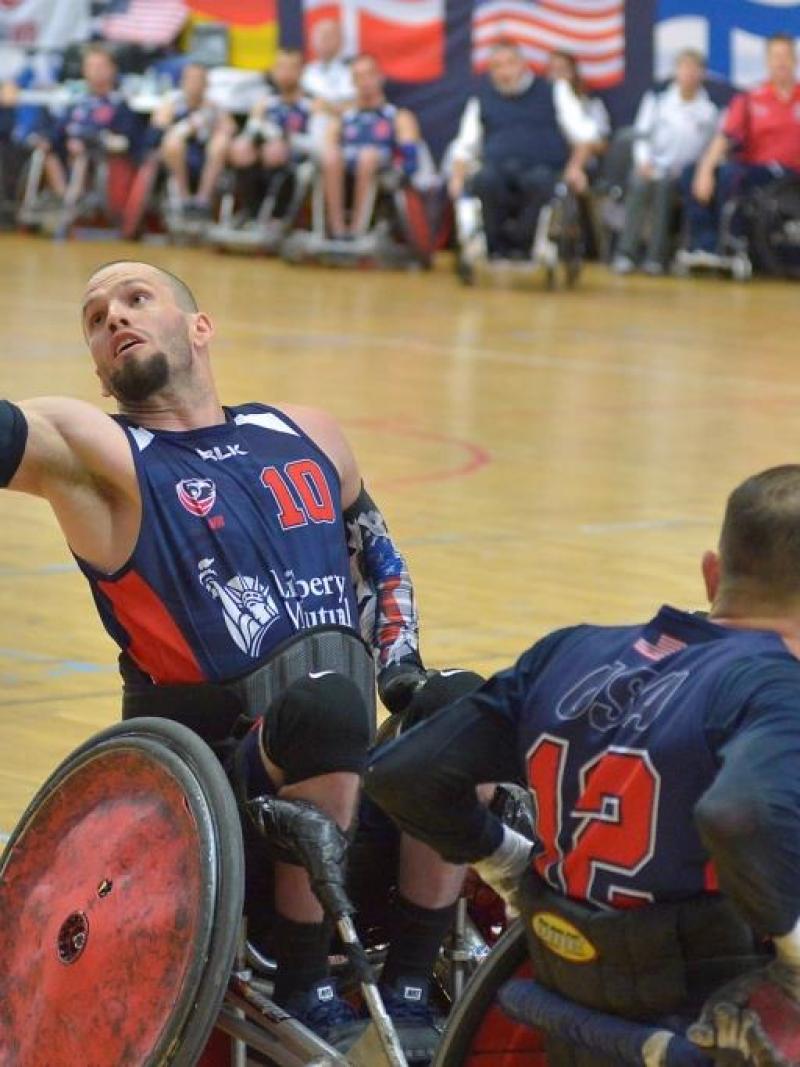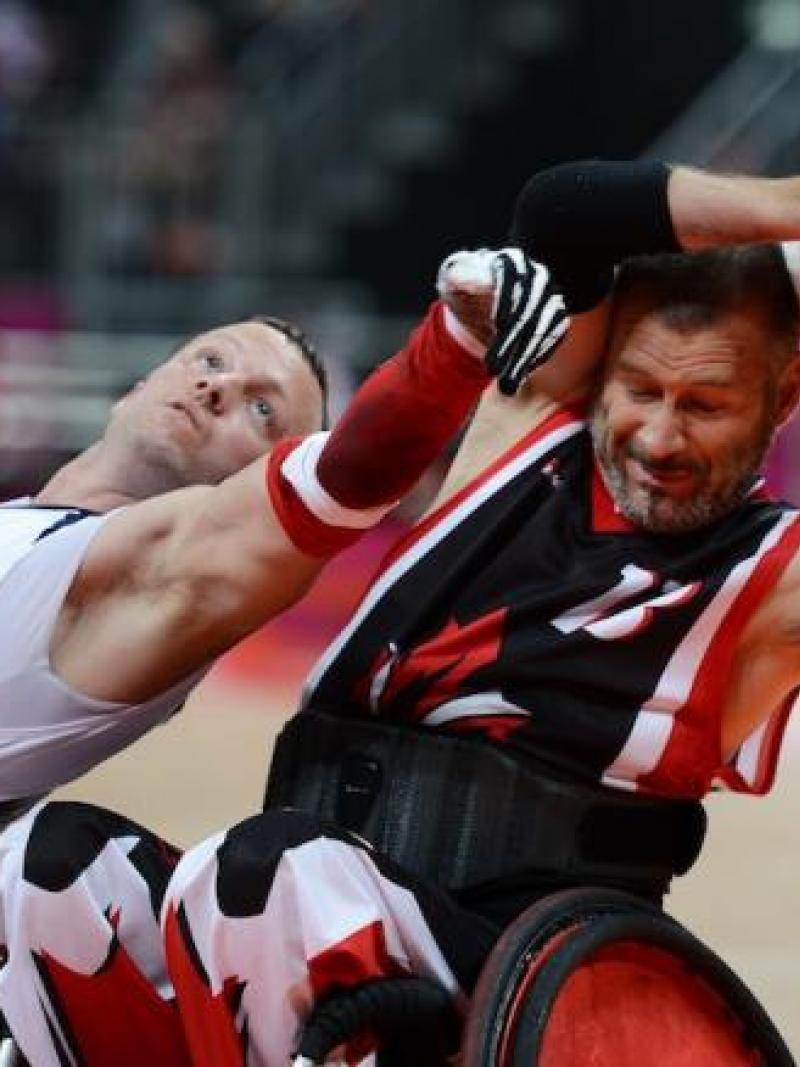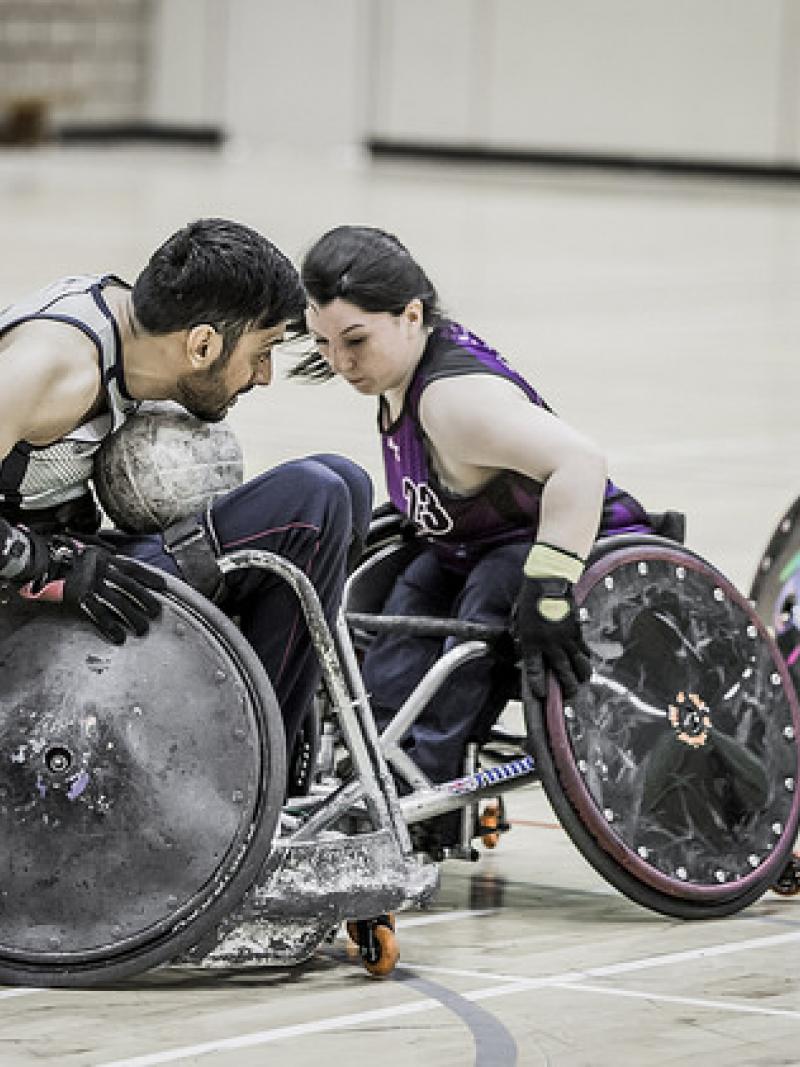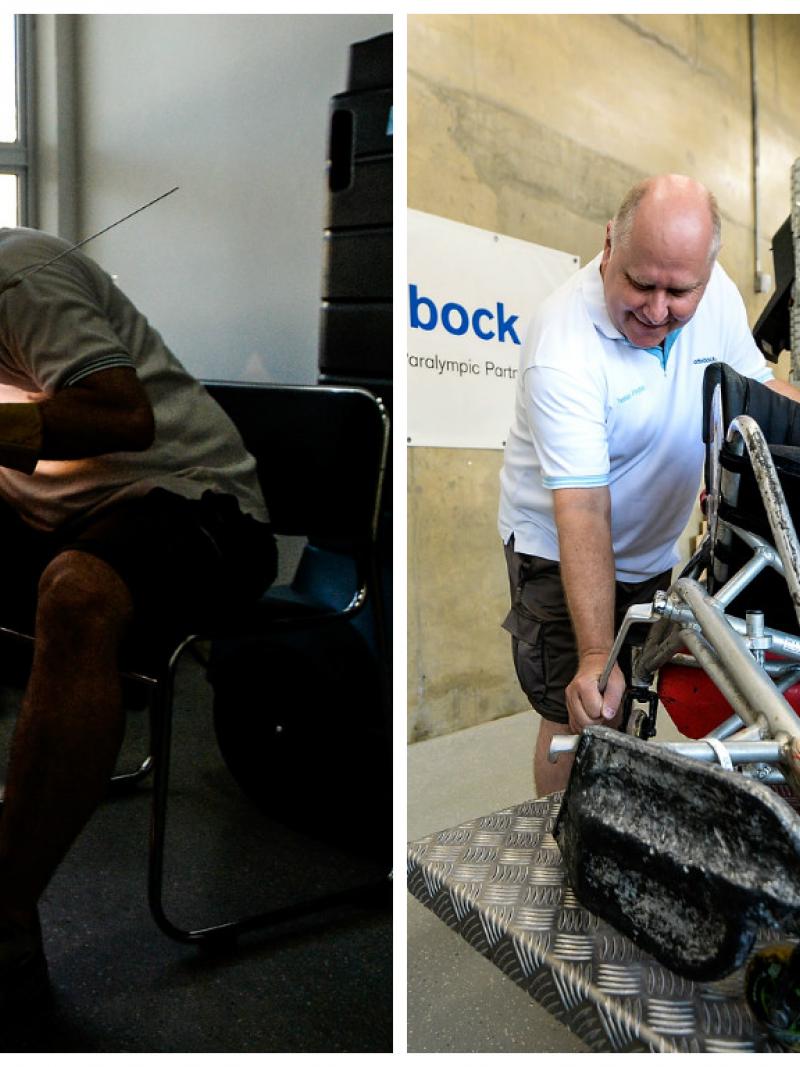Sport Week: Classification in wheelchair rugby
A player can be allocated to one of seven sport classes, depending on his or her impairment. 07 Jun 2016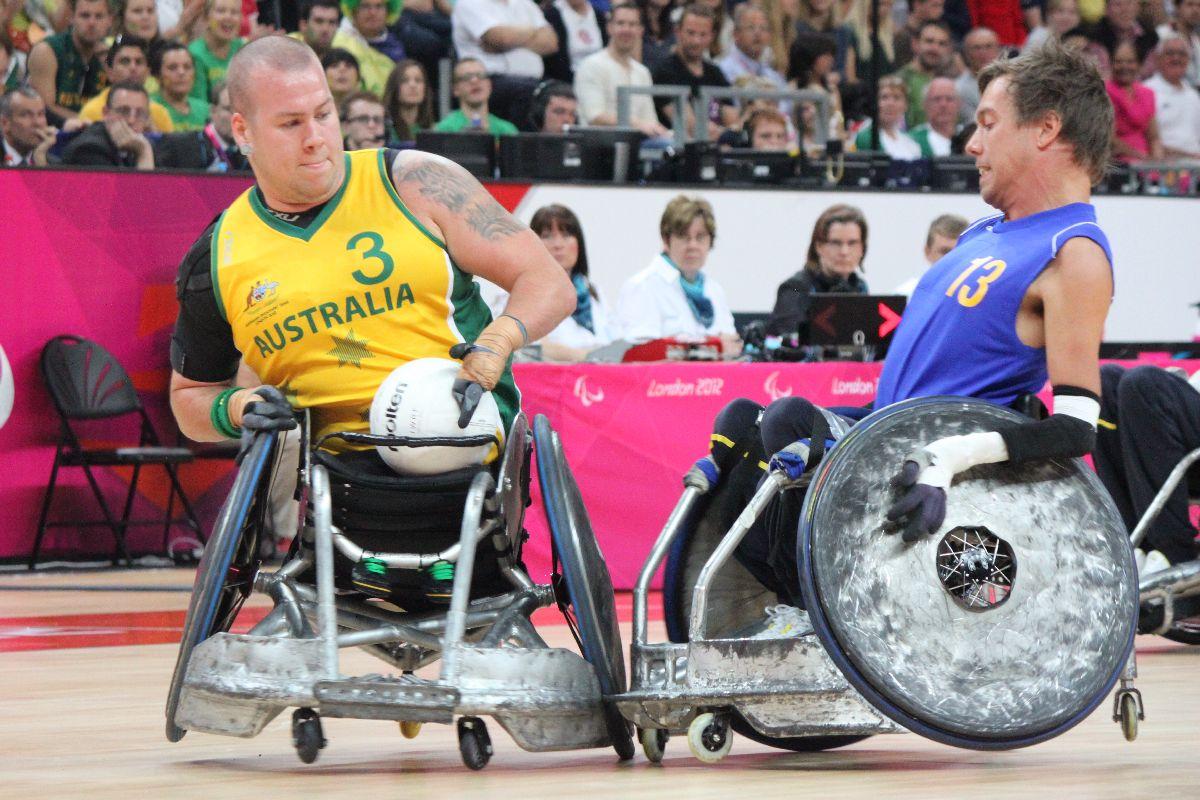
Ryley Batt competes at the London 2012 Paralympic Games
Wheelchair rugby was originally designed for athletes with tetraplegia, which is paralysis of both the arms and legs. Today, the team sport also includes players with other impairments that cause limited arm and leg function.
Athletes with an eligible impairment are allocated a sport class based on their abilities in performing the skills of ball handling, such as passing, catching, carrying and dribbling; and wheelchair skills including pushing, starting, stopping, directional changes, tackling and blocking.
There are seven different sport classes: 0.5, 1.0, 1.5, 2.0, 2.5, 3.0 and 3.5. The most significant activity limitation is described in the 0.5 sport class profile.
Sport class 0.5
Players have significantly limited function in their shoulder, arms and hands, for example due to tetraplegia. The player would typically catch the ball by tapping it into their lap and throwing the ball with a scoop pass. Their main role on the court is as a blocker.
Sport class 1.5
A player has fair arm function, which makes him or her an excellent blocker. A 1.5 player will also handle the ball on occasion, but typically they show some instability in the wrist, which leads to limited ball security. Some athletes also have asymmetrical arm function, so that they mainly handle the ball with their strong arm only.
Sport class 2.5
Players in this sport class have good shoulder stability and arm function. They might have some trunk control. Due to their ability to flex their fingers, they can perform overhead passes, catch the ball with two hands and maneuver the wheelchair effectively. In the team they are ball handlers and fairly fast playmakers.
Sport class 3.5
A 3.5 player has good arm and hand function, which makes him or her a major ball handler in the team. They have some trunk function, which helps them rapidly accelerate the wheelchair. They will typically have a high and upright sitting position. Also, an athlete with above knee amputations of both legs and with a loss of fingers and hand surface on both sides may play in this sport class. You will see 3.5 players perform controlled one-handed, long-distance passes.
Sport-technical rules
Teams are comprised of four players, and the total number of classification points on the court for a team may not exceed eight. This way the impact of the impairment on the game is balanced between the two teams.
Eligible impairments in wheelchair rugby
Impaired muscle power
Athetosis
Impaired passive range of movement
Hypertonia
Ataxia
Limb deficiency
Helpful links
IPC classification webpage: https://www.paralympic.org/classification
IWRF classification webpage: http://www.iwrf.com/?page=classification
Editor’s note
Each sport on the Rio 2016 Paralympic programme will have a dedicated week of featured content published on paralympic.org. Every week a new sport will be featured and the series will run until September’s Games, helping the public understand more about the 22 sports being contested in Rio.
__
Sport fans from around the world can now buy their Paralympic tickets for Rio 2016 from authorised ticket resellers (ATRs)
The IPC’s Global ATR is Jet Set Sports, and Rio 2016 tickets and packages can be purchased on the CoSport website.
Residents of Brazil can buy 2016 Paralympics tickets directly from the Rio 2016 website.

 Facebook
Facebook
 Instagram
Instagram
 Twitter
Twitter
 Youtube
Youtube
 TikTok
TikTok
 Newsletter Subscribe
Newsletter Subscribe

